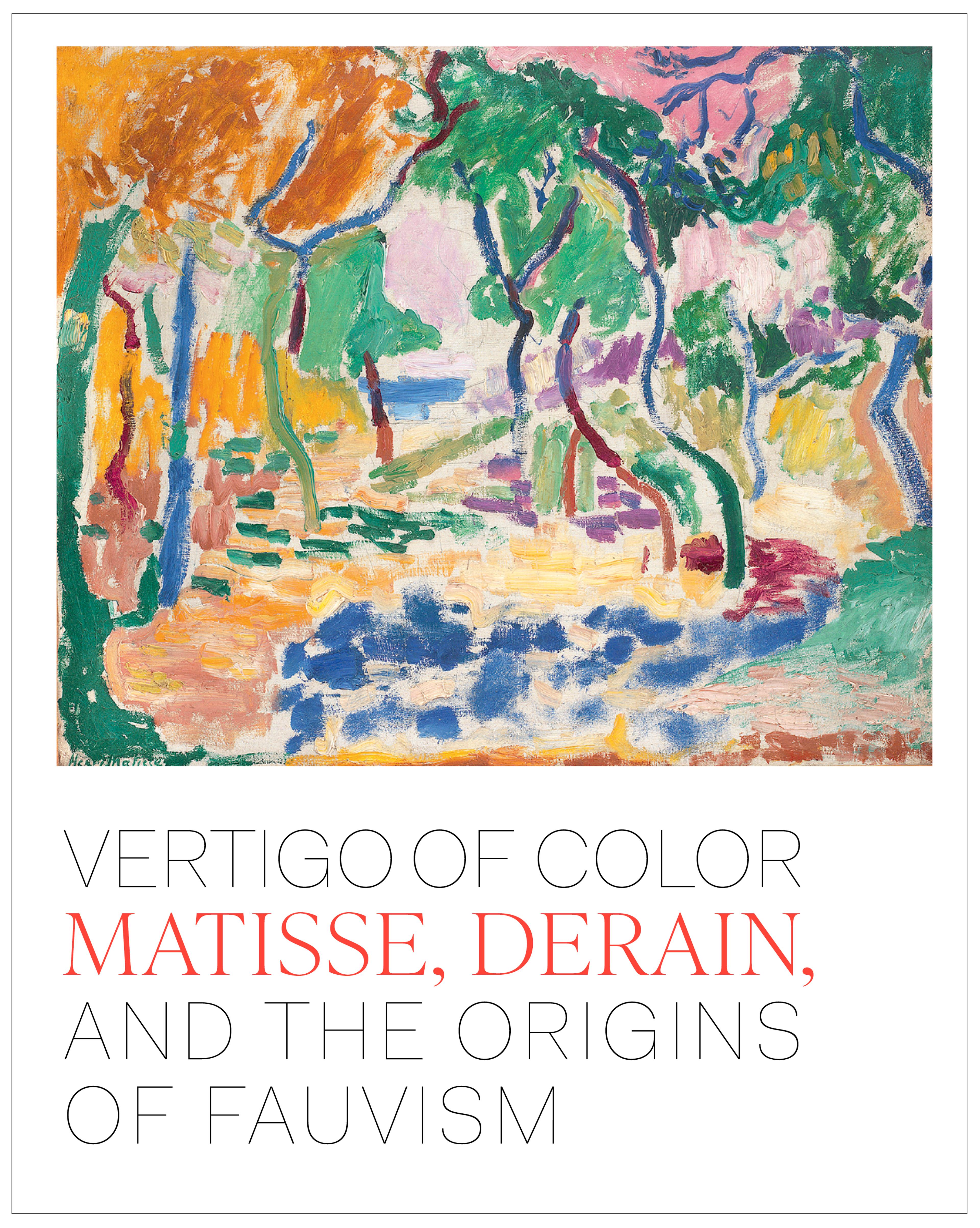View of Collioure
Between 1905 and 1914, Matisse spent various summers and one winter in the small fishing village of Collioure on the Mediterranean coast, not far from the Spanish border. During his first summer there, his family initially lived in a small pension, "La Mère Rosette," before moving into an apartment facing the harbor, from which he painted various window views. Then, from 1906 to 1914, the artist rented the upper floor of a small house complete with studio and skylight. From there it was only a seven-minute walk to the picturesque site above the rock (called "Roca-Alta d'en Beille," Catalan for "High Rock") from which Matisse often painted views of Collioure such as this one.
By 1907, Matisse had developed the flat and decorative style that he had employed for the first time in 1906 in the Young Sailor II (MMA 1999.363.41). The black lines that form a screen before the view of Collioure and the sea are the trunks and branches of the umbrella pines that grow on the hillside overlooking the harbor. Encircling the areas of bright color painted in greens, blues, mauves, and earth tones, the sinuous lines resemble the leading around stained-glass windows; not surprisingly, the Matisse family referred to this painting as "Le Vitrail" ("The Stained Glass"), and it is often listed as such in early exhibition catalogues. Through the foliage is a distant view of several red-roofed houses, the tower of Collioure's church, and a horizontal band marking the division between the pink sky and deep-blue sea.
By 1907, Matisse had developed the flat and decorative style that he had employed for the first time in 1906 in the Young Sailor II (MMA 1999.363.41). The black lines that form a screen before the view of Collioure and the sea are the trunks and branches of the umbrella pines that grow on the hillside overlooking the harbor. Encircling the areas of bright color painted in greens, blues, mauves, and earth tones, the sinuous lines resemble the leading around stained-glass windows; not surprisingly, the Matisse family referred to this painting as "Le Vitrail" ("The Stained Glass"), and it is often listed as such in early exhibition catalogues. Through the foliage is a distant view of several red-roofed houses, the tower of Collioure's church, and a horizontal band marking the division between the pink sky and deep-blue sea.
Artwork Details
- Title:View of Collioure
- Artist:Henri Matisse (French, Le Cateau-Cambrésis 1869–1954 Nice)
- Date:1907
- Medium:Oil on canvas
- Dimensions:36 1/4 × 25 7/8 in. (92.1 × 65.7 cm)
- Classification:Paintings
- Credit Line:Jacques and Natasha Gelman Collection, 1998
- Object Number:1999.363.42
- Rights and Reproduction:© 2026 Succession H. Matisse / Artists Rights Society (ARS), New York
- Curatorial Department: Modern and Contemporary Art
More Artwork
Research Resources
The Met provides unparalleled resources for research and welcomes an international community of students and scholars. The Met's Open Access API is where creators and researchers can connect to the The Met collection. Open Access data and public domain images are available for unrestricted commercial and noncommercial use without permission or fee.
To request images under copyright and other restrictions, please use this Image Request form.
Feedback
We continue to research and examine historical and cultural context for objects in The Met collection. If you have comments or questions about this object record, please contact us using the form below. The Museum looks forward to receiving your comments.
